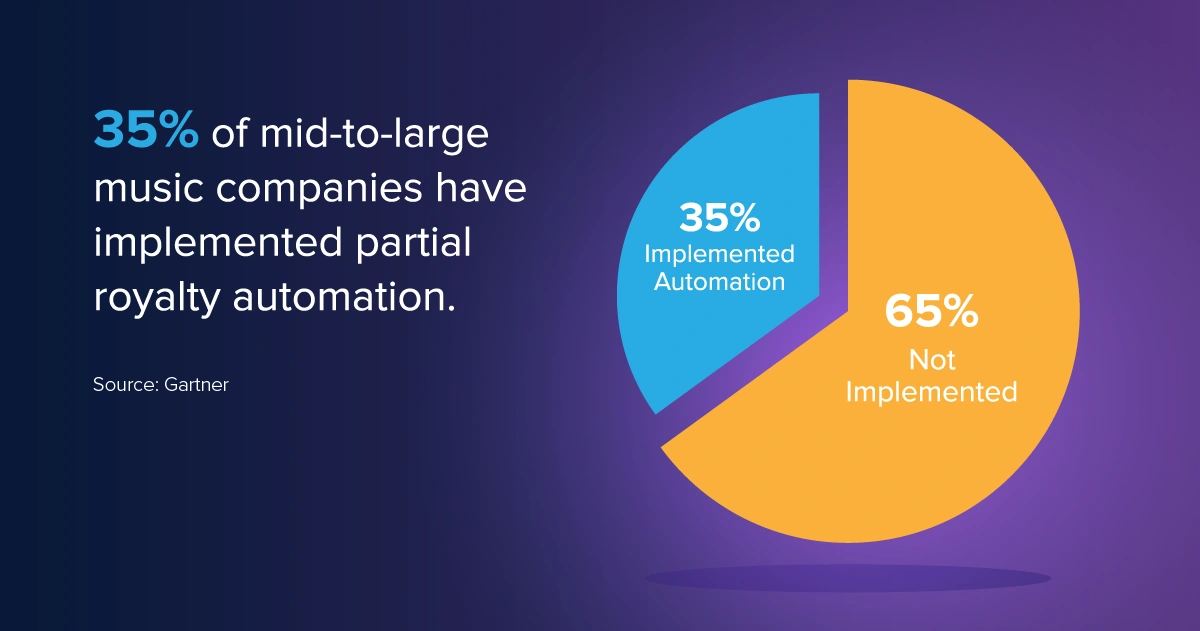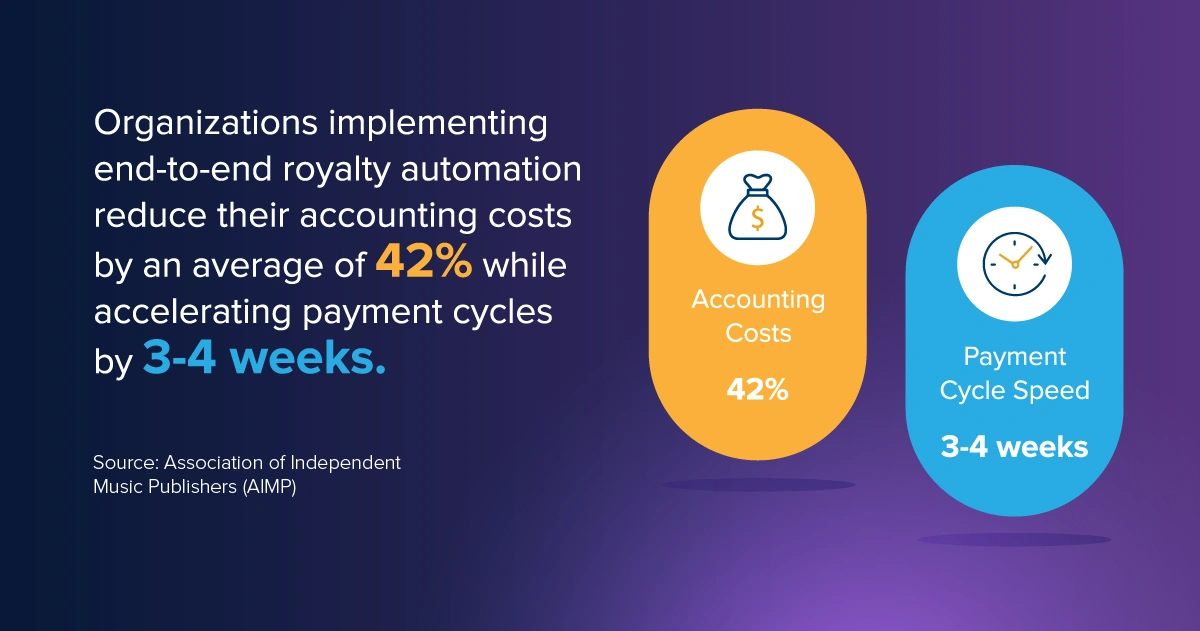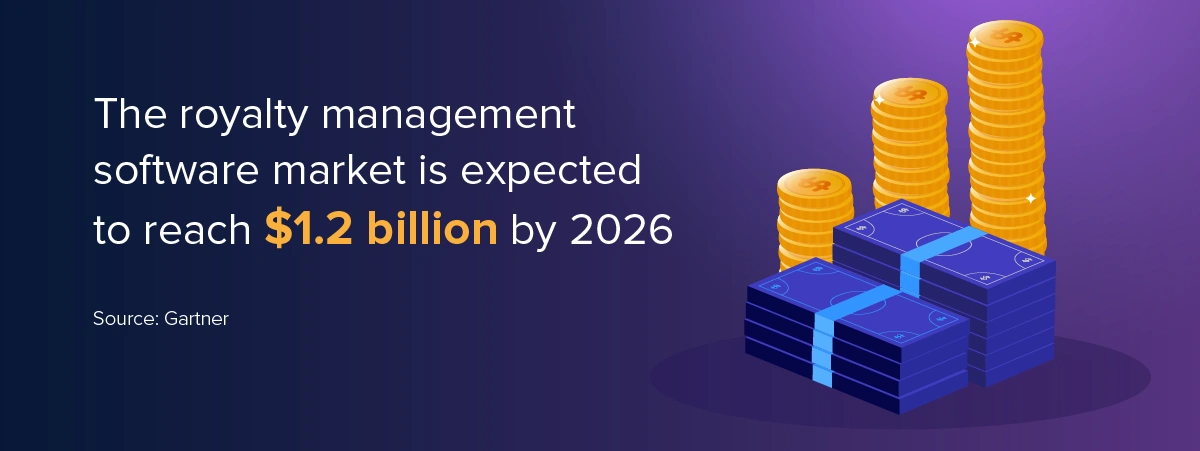
How accounting automation is changing the tune for music royalty management
Picture this: You’re at your desk sorting through a mountain of royalty reports — payments from streaming platforms, digital downloads and sync licensing deals — each one tracked in a separate, fragmented system. Despite days of effort, you're left with the nagging feeling that crucial revenue might have slipped through the cracks.
This gap is a critical inflection point for the industry. It concerns the future of financial operations and relationships with creators. How much value remains unclaimed due to outdated, error-prone manual processes?
Complexity of modern royalty management
The industry’s financial ecosystem is no longer a simple game of mechanical royalty tracking. We’ve entered an era of unprecedented complexity — a tangled web of streaming platforms, digital distribution channels, global revenue streams and inconsistent metadata across platforms. Streaming now represents 67% of total music consumption.
How do you effectively manage this complexity, track revenue across diverse channels and ensure creators get what they deserve? I believe the answer lies in intelligent automation that simplifies processes and enhances revenue tracking, relationship management and strategic insights.
Overcome the 5 challenges in royalty accounting
Before exploring technology's opportunities, let's recognize your 5 biggest hurdles:
- Fragmented data and inconsistent metadata
The most persistent challenge is data fragmentation across platforms. With music distributed across countless services and formats, the accompanying metadata is often inconsistent or incorrect. Different platforms use different tracking systems, causing discrepancies when reconciling payments.
The result? Royalty miscalculations, delayed payments and eroded trust between labels, distributors and artists. Manual standardization of this data is time-consuming and error-prone. - Global revenue streams and complex rights management
The global nature of music adds another layer of complexity. Companies must track payments across different countries, currencies and tax regulations. With multiple rights holders, you face a tangled web of contracts and obligations.
This leads to rights disputes, payment delays and misaligned financial forecasts as companies struggle to match revenue streams with correct rights holders. - Legacy systems and technological integration
Many established music companies still operate on legacy systems developed before the streaming and digital distribution age. These systems weren’t built to handle today’s data volume or complexity. Integrating automation requires substantial investment and new infrastructure to bridge old and new technologies. - Lack of industry-wide standardization
The industry lacks a universal framework for metadata management, revenue tracking, or royalty calculation. This inconsistency makes it difficult to create solutions that work across the entire music ecosystem. Each company must develop its approach, creating inefficiencies and missed collaborative opportunities.
- Resistance to change
The industry has long relied on traditional royalty management methods. Adopting new technologies involves significant upfront costs and potential workflow disruptions. Employees naturally become wary of automation, fearing job replacement.
Management must communicate which tasks benefit from automation and how it allows employees to pursue higher-value activities. The more your team can multitask through augmentation, the greater their value — and your profitability — will be.
From chaos to clarity
In today’s music industry, data is the currency of survival. You’re dealing with massive amounts of disjointed data, and this is where technology becomes your ally.
AI and machine learning (ML) tools transform metadata and rights management. AI-powered systems standardize metadata across platforms, creating a unified language. Predictive matching algorithms untangle complex rights relationships. This augments human expertise with an intelligent analysis layer that instantly processes millions of data points.
From tactical to transformative
A 3-phased, strategic approach will ensure you’re adapting to technology and shaping your financial operations’ future.
- Phase 1: Start small
Audit your current systems and identify areas for improvement.
- Phase 2: Mid-term
Pilot automation in key revenue streams, upskill your teams and invest in flexible tech infrastructure.
- Phase 3: Long-term
Move toward an intelligent, adaptive royalty ecosystem that places creators at the center of innovation.
I can’t emphasize this point enough: The future of music finance isn't just about operational efficiency — it's about creating an ecosystem of trust, transparency and creator empowerment.
A new era in music industry finance
Industry leaders are embracing data-driven solutions as the foundation of their financial strategy. These companies achieve unprecedented operational efficiency, improve creator relationships and secure their place at the forefront of digital transformation.
Remember that image of you sifting through endless reports? Now imagine having the innovative, automated tools to clear that desk, streamline processes and turn complexity into clarity.
You must turn data into insight and technological potential into tangible value. The time to act is now.
Get the latest news, updates, and exclusive insights from Vistex delivered straight to your inbox. Don’t miss out—opt in now and be the first to know!





